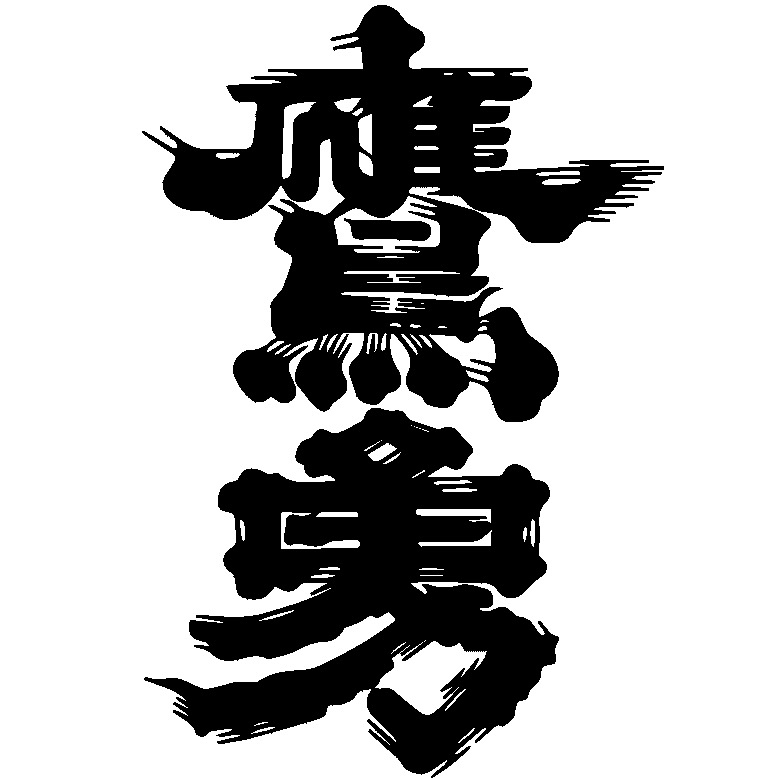鷹勇は鳥取県で一番大きな蔵です。しかし、全国的に見ればとても小さな蔵です。社長の大谷修子氏は「しっかりと造られたお酒は熱々に暖めても味が崩れず逆に旨味を増します。さらにそのお酒が冷めても一度出た旨味は残り暖める前よりも美味しくなっています。私は燗冷ましのお酒を飲むのが好きです。」とおっしゃいます。鷹勇のお酒は正に燗冷ましにして美味しい。純米は米の旨味がたっぷりで、吟醸、大吟醸は果実のような甘い風味があります。味の輪郭が分かりやすく普段あまりお酒を飲まない人にもやさしいお酒です。
[ Please wait for the English. ]
When was your brewery established?
1872
What is your annual output?
1200 koku or 216,000 litres
Including the Tōji (Master brewer) how many brewers do you have?
10
What is your emphasis in brewing Sake?
“The most important thing when making Sake is harmony between people, harmony between people brews good Sake.” A favourite saying of former Tōji and current Sake advisor to Takaisami Master Sakamoto Toshi – “ I believe the most important thing in making Japanese Sake is the harmony between people. I can’t make Sake by myself! Brewing Japanese Sake is very labour intensive. I believe the harmony between the people involved in every stage of the Sake brewing process produces good Sake.” In line with his teaching, we are working hard to create a work environment that can produce harmony between all of our people.
In 100 words or less tell us what is Takaisami’s appeal?
To date, Takaisami has received 13 gold medals at the new Sake awards held by the Japan Brewers Association. The land that has been lashed by the biting winds of winter, and absorbed the abundant melt of spring is ideal for Sake making. Yamada-nishiki is our basic sake rice, but we also use Tama-sakae, and the speciality Sake rice from Tottori prefecture, Gōriki. We are continuing the tradition of dry sake that allows you a glimpse of the people who make the Sake, from rice growing to Sake making. We have put all of our skill and passion in to produce fine Sakes that are refreshing and clear, with a deep flavour.
Takaisami is not a Sake that can be understood in one sitting. At a glance it is crystal clear, but it has tons of umami hidden inside. It takes a little time after you open the bottle for these flavours to come out, and when heated they really come alive. Sakes that can handle aging, they are the fruits of good old fashioned Sake making and skill. Even after opening, it’s Sake that can be enjoyed slowly over time.
Often described as dry, full bodied, a real “man’s” Sake, it also contains rich, fruity aromas that make it a very smooth drink. If you want to age your Takaisami, then it will only improve over time.
Which Sake, from Takaisami’s line up do you recommend?
Junmai-Ginjō Nakadare
Junmai-Ginjō Gō-riki
Junmai-DaiGinjō
Tokubetsu-Junmaishu
How would you drink this Sake and what kinds of food does it go with?
Junmai-Ginjō Nakadare: Warm/room temp goes well with white-fleshed fish.
Junmai-Ginjō Gō-riki: Hot/room temp, also fish with lighter colour flesh, mackerel, sea bream etc.
Tokubetsu-Junmaishu: Hot/room temp goes well with rich oily dishes. Yakitori, pot-stickers, traditional eel broiled in rich soy based sauce.
Junmai-DaiGinjō: Room temp, fried eggplant.


